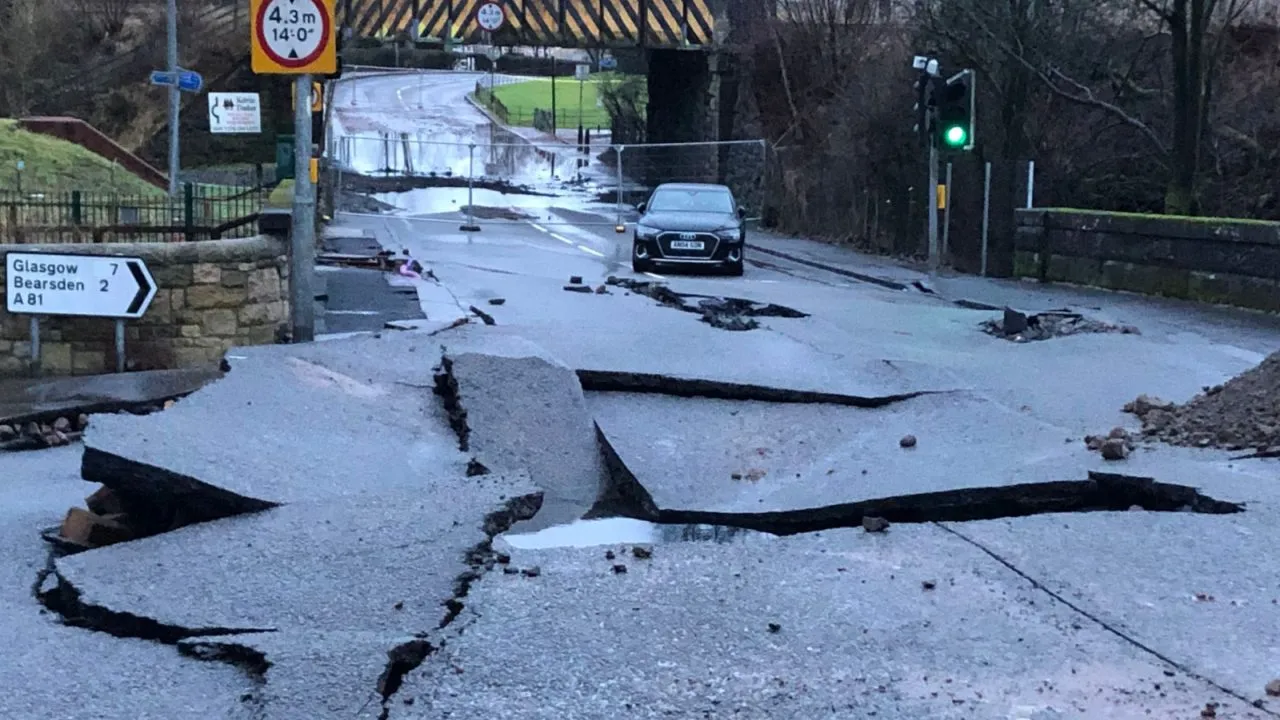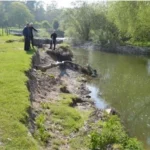A major Glasgow water main break Shettleston Road event recently brought parts of the city’s East End to a standstill. Streets flooded, homes lost water pressure, and traffic came to a crawl as emergency crews worked tirelessly to repair the damage. This incident not only disrupted daily life for thousands of residents but also exposed the vulnerabilities of Glasgow’s aging water infrastructure.
What Happened on Shettleston Road
The Glasgow water main break Shettleston Road occurred in the early hours of the morning near the junction between Old Shettleston Road and Fernan Street. A high-pressure water main, several decades old, suddenly ruptured beneath the asphalt. Within minutes, torrents of water surged through cracks in the road, flooding surrounding pavements and lanes.
Authorities quickly cordoned off the affected stretch, diverting traffic and deploying emergency repair teams. By mid-morning, Scottish Water confirmed that the burst had caused a significant loss of pressure across the G32 postcode area, leaving hundreds of homes without a steady water supply.
Throughout the day, teams worked to locate the exact rupture point, shut off water flow to the damaged section, and begin excavation. Heavy machinery was brought in to expose the burst pipe, remove the broken sections, and replace them with reinforced materials.
Repairs continued into the night, with partial restoration of water pressure achieved by the following morning. However, road resurfacing and pavement repairs took several more days to complete.
Immediate Effects on Residents and Businesses
Water Supply Interruptions
The most immediate consequence of the Glasgow water main break Shettleston Road was the widespread loss of water supply. Many residents woke to find dry taps or murky, discolored water flowing at low pressure. Daily tasks like cooking, bathing, and laundry became impossible for many households.
Scottish Water advised residents to run their kitchen taps slowly until water cleared, as sediment stirred up during the burst often caused temporary discoloration.
Traffic Chaos
Shettleston Road is one of the busiest routes in Glasgow’s East End. The closure of a major section led to traffic diversions through nearby residential streets such as Westmuir Street, causing congestion and long delays during peak hours. Bus routes had to be modified, and commuters faced hours of frustration as crews worked to control the flooding and repair the pipe.
Business Disruptions
Local businesses from cafés and shops to laundromats and salons faced operational challenges. Many were forced to close temporarily due to lack of running water or because customers couldn’t access the area. Those that remained open struggled with reduced footfall and lost revenue. Some basement-level businesses also reported water ingress, leading to property damage and additional cleanup costs.
The Response and Repair Efforts
Once the Glasgow water main break Shettleston Road was reported, Scottish Water crews acted swiftly. Emergency teams isolated the affected section of the pipe to prevent further flooding and rerouted the water network where possible to restore limited service to residents.
Repair crews then excavated the road to access the damaged pipe. The replacement process required precision cutting away corroded pipe sections, inserting new fittings, and pressure-testing the line before reconnection.
Throughout the response, communication played a vital role. Scottish Water and Glasgow City Council issued frequent updates via social media and local news outlets, informing residents about restoration timelines and safety instructions.
Underlying Causes Behind the Break
Aging Infrastructure
Experts point out that the Glasgow water main break Shettleston Road highlights a deeper problem: aging infrastructure. Many of Glasgow’s underground water networks are over 50 years old, built during a period of rapid urban expansion. Over time, corrosion, temperature fluctuations, and ground movement weaken these pipelines.
Pressure and Environmental Stress
Water mains are constantly under pressure. Changes in flow rates, construction vibration, or even weather-related soil movement can create sudden stress points. Once weakened, a pipe can rupture unexpectedly, as seen in this case.
Lack of Preventive Upgrades
While emergency repairs are efficient, they are reactive. Long-term solutions require proactive replacement programs, pressure monitoring systems, and predictive maintenance. Without consistent investment, these incidents are likely to recur.
Broader Impacts and Community Resilience
The Glasgow water main break Shettleston Road is more than a local inconvenience — it’s a reminder of how interconnected urban systems are. When one utility fails, others often feel the ripple effects. Traffic congestion, lost productivity, business downtime, and property damage all stem from a single pipe rupture.
However, the community’s resilience was evident. Residents cooperated with emergency crews, followed safety advisories, and supported affected neighbors. Quick communication and teamwork helped minimize chaos in an otherwise disruptive event.
Lessons Learned from the Incident
Invest in Modern Infrastructure
The biggest takeaway is the urgent need for infrastructure renewal. Upgrading Glasgow’s water mains with durable materials and smart sensors can prevent sudden breaks and reduce repair times.
Enhance Monitoring Systems
Introducing real-time pressure sensors and AI-based monitoring could alert authorities before a small leak escalates into a major burst. Predictive maintenance is more cost-effective than emergency repairs.
Improve Public Communication
Scottish Water’s consistent updates during the crisis were commendable. Transparent communication builds public trust, helping residents stay informed and calm during disruptions.
Plan for Urban Resilience
City planners must design systems that can absorb shocks alternative water routes, strong repair protocols, and better emergency logistics are essential for future-proofing urban areas.
What Residents Should Do During a Water Main Break
If another Glasgow water main break Shettleston Road-type incident occurs, residents can protect themselves by:
- Keeping bottled water stored for emergencies.
- Avoiding use of washing machines and dishwashers until water is fully restored.
- Running the cold tap slowly to clear any discolored water.
- Following official updates from Scottish Water and the Glasgow City Council.
- Reporting leaks or unusual water activity immediately.
Conclusion
Glasgow water main break Shettleston Road was a wake-up call for both the city and its residents. It demonstrated how fragile yet vital our underground systems are. While emergency crews worked effectively to restore water and repair roads, the incident underscored the urgent need for proactive infrastructure investment and modern monitoring solutions.
As Glasgow continues to grow, maintaining reliable water systems will be essential for community safety, economic stability, and public trust. The lessons learned from this incident should guide future improvements — turning disruption into determination for a stronger, more resilient city.





